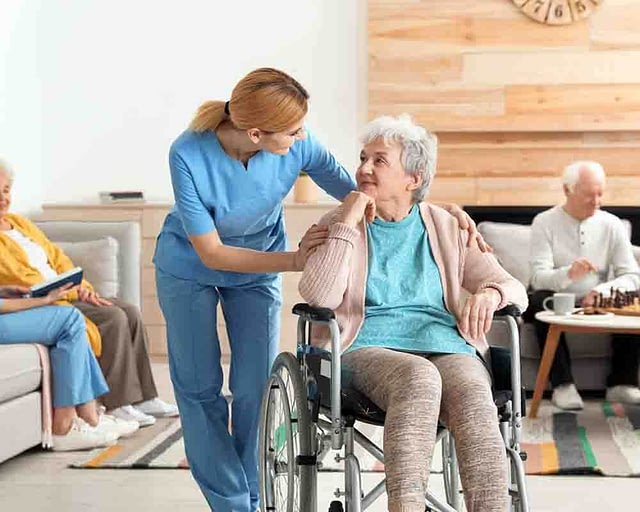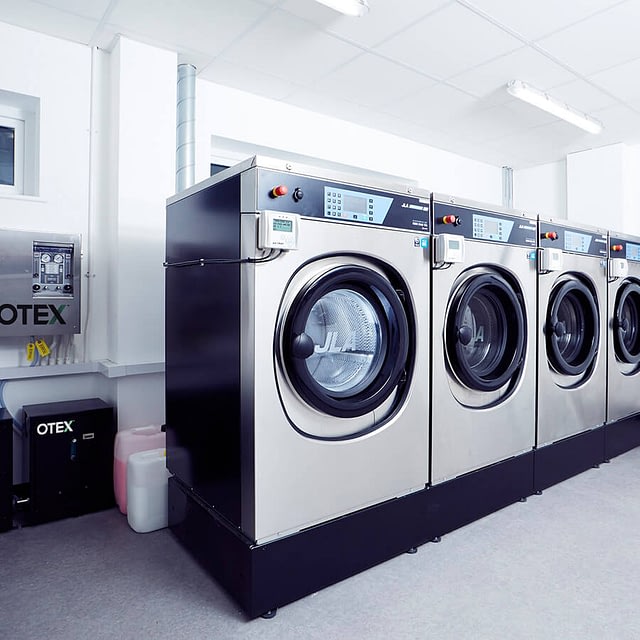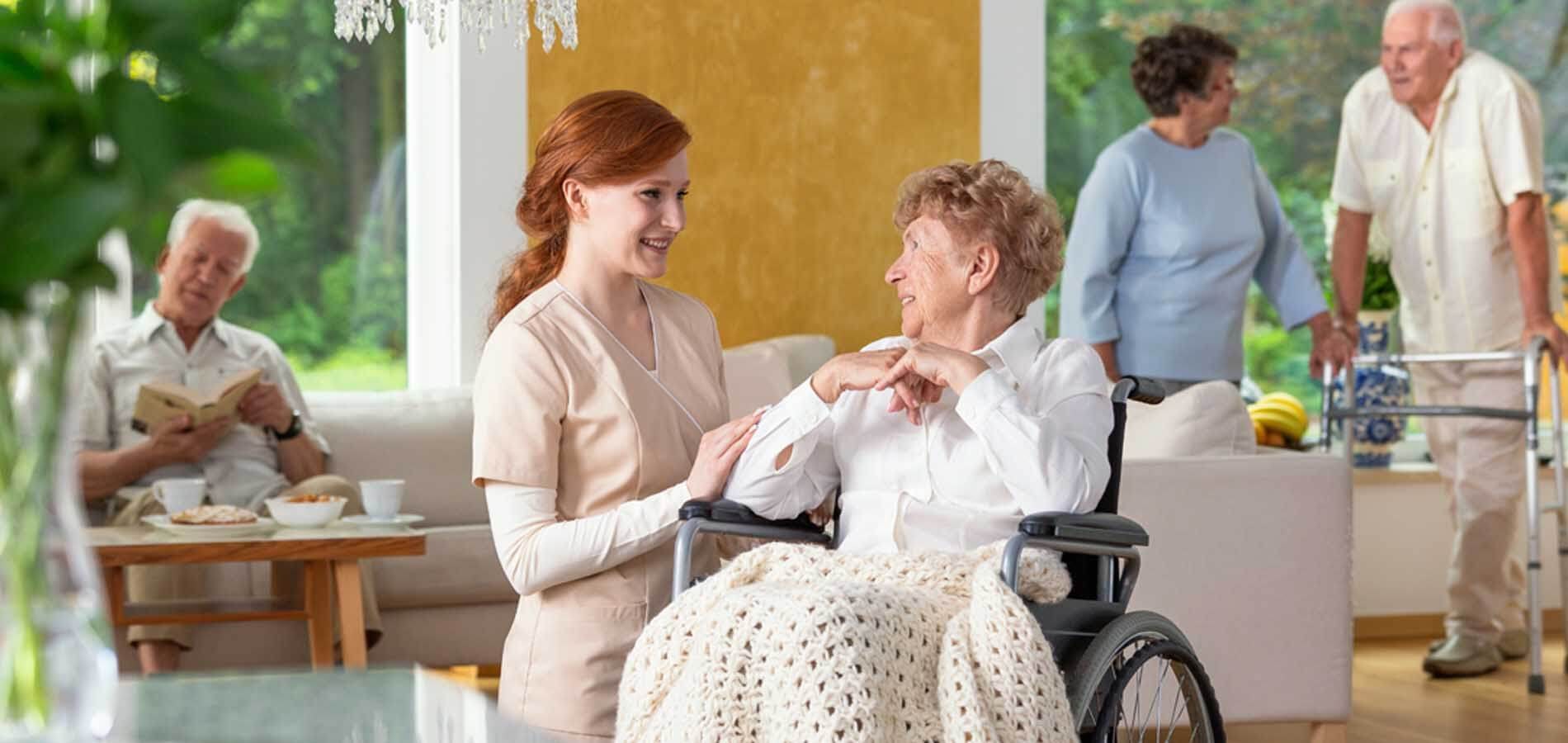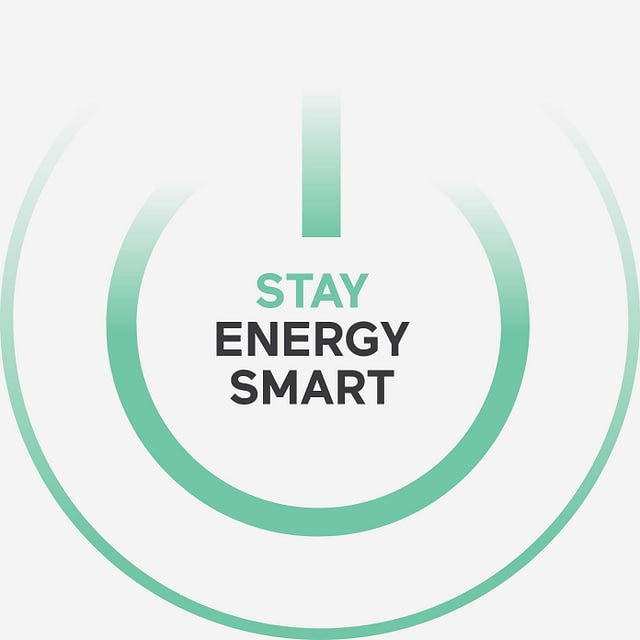As managers across the UK’s care sector continue to navigate the triple challenge of infection control, rising utility costs, and the drive for greater energy efficiency, what innovations and practices can be adopted to help future-proof care homes, protect residents and staff, and still enable organisations to meet their short and longer-range sustainability targets?
In this piece on finding the balance, JLA’s Chief Data & Marketing Officer, Christina Larkin shares her thoughts on an increasingly pressing question.

Why sustainability in the care sector matters
The Covid-19 pandemic has rightly seen the care industry – and the Care Quality Commission – place renewed focus on infection control. From the laundry room to the kitchen, care home hygiene and safety are rightly non-negotiable, while compliance and residents’ safety remain everyone’s top priority.
At the same time, initiatives to drive efficiency, reduce waste and decarbonise the sector continue to gather pace, with net-zero targets and more accessible alternative technologies allowing organisations to reduce their carbon footprint without compromising care standards. The good news, then, is that energy savings are still highly achievable in care settings, and can even help to demonstrate to your residents (and their families) that you are taking steps to becoming a more sustainable business, which in turn enhances your reputation.
Of course, practically meeting these expectations will usually mean adopting a range of measures. These could be as simple as switching to more sustainable everyday consumables and reducing waste sent to landfill. It could mean upgrading boilers and associated heating equipment to more efficient, hydrogen-ready units. Or it could mean investing in more energy-efficient washing machine systems, which, thanks to technological innovations, will use considerably less electricity and hot water to disinfect a laundry load, and actually lower your day-to-day running costs.
Whatever the path you take, improving sustainability brings a myriad of benefits – and not only in operational efficiencies or cost savings. In fact, it’s increasingly the case that committing to sustainability means investing in your people’s wellbeing as well. By making positive changes and working on sustainability together, you can help to improve morale and reduce staff turnover, which allows residents to build even deeper relationships with your care team. You’ll also be a more attractive proposition to talent across the industry, which further drives up standards.
And as more and more families begin to consider the environmental impact of facilities while making crucial care decisions, such a commitment to sustainability could well become the key difference between you and your competition.
Adopting best practice solutions
With commercial energy costs at record highs, we often hear of care homes seeking cheaper domestic washing machines for their laundry rooms. However, research shows that this can be a false economy.
For one, domestic machines are much less robust, needing more regular repairs, while their smaller load capacities add up to needing more washes, at greater expense.

More importantly, it is unlikely that they can achieve and maintain the thermal temperatures required to keep you compliant with the requirements of HTM 01-04.
A commercial washing machine is far more likely to control temperatures effectively, as well as providing the correct holding time to achieve the full penetration of a load for disinfection.
Alternatives to thermal laundry infection are becoming increasingly widespread, too. One example is ozone disinfection technology, which uses the power of natural ozone gas to eliminate infection from laundry loads on an energy-saving cool wash. During a study with Leicester’s De Montfort University, JLA’s own ozone disinfection system, OTEX, was found to completely remove the coronavirus. It also helped to cut hot water usage by up to 80% and electricity by 60%.
As expected, regular servicing and proactive maintenance are more likely to extend the working life of your equipment. But when washers, dryers and other appliances reach the end of their life, it is always worth considering the latest developments to understand what they could save you in time, energy and money. This is because the most up-to-date technologies are likely to come with enhanced energy-saving features, and help you spread savings across the year.
Further utility savings can also be achieved through comparatively low-cost investments such as swapping double-headed taps for single-lever taps to help control hot water consumption, installing showerheads that use aeration to save water, adding reflective heat film to your windows to reduce energy loss, and – a classic – powering down any unused appliances.
Energy-saving innovations are becoming more accessible
As technology for the care sector continues to evolve, embracing it will be key to staying ahead. Enabled by internet connectivity and state-of-the-art sensors, remote monitoring systems are now allowing providers to keep a watchful eye on your equipment, spotting issues early and dealing with them before they can cause disruptive downtime. Similarly, customers are getting fresh insights into the way their laundry rooms are running; from one dashboard, managers can easily view real-time data without having to be on site. By creating a fuller picture of a laundry room’s daily use, these systems offer a smart way to plan resources, save time, and make decisions that reduce energy use. And as this technology expands, we expect to see more and more use cases opening up.
JLA’s own Connect service offers always-on monitoring for compatible commercial laundry equipment. Some of its features include improving efficiency by estimating the amount of energy and water machines use, in addition to suggesting better times to run them for maximum savings. On top of that, JLA Connect offers a handy way to quantify and potentially reduce environmental impact with estimates of CO2 emissions.
JLA has also introduced its own Energy Smart Hub, which combines practical tips, data-driven insight and actionable advice that is already helping customers tackle rising energy costs and stay energy smart. We view this hub as a crucial resource offering honest comparisons between products while ensuring customers have the full picture on costs and benefits when they come to explore or invest in more energy-efficient equipment.
Our recently published sustainability report – a first in the commercial equipment industry – expands this transparent approach. The report not only explains the steps we’ve taken to save our customers 8 million kWh in electricity, and 276 million litres of water through OTEX, but formalises our sustainability strategy. We believe it is vital to outline our future goals as we continue to support thousands of organisations, like yours, that are the bedrock of the UK’s social infrastructure.
It is our hope that by adopting best practices, embracing new innovations, and sharing inspirational success stories, the sector can navigate today’s challenges while working towards a future of excellence in care and environmental responsibility.





